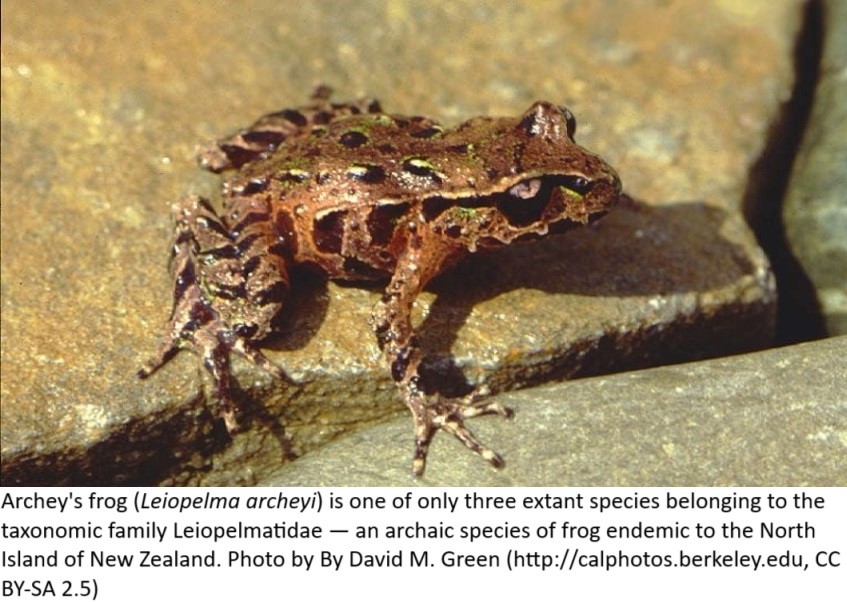Zealandic amphibians are a damp squib.

Prof. Mumblebard claims: “New Zealand, like Tasmania and Patagonia at similar latitudes, is a former piece of Gondwana. However, it differs from these other southern lands in having an extremely poor and primitive fauna of frogs, consisting of just one archaic, semi-terrestrial genus which lacks free-foraging tadpoles. This paucity of frogs in New Zealand is explained by the near-drowning of the mini-continent of Zealandia before renewed mountain-building from the sea floor. The one lineage of frogs that happened to survive this geological turbulence has – like the tuatara – been preserved as a living fossil in the remote archipelago that New Zealand has become.”
Robin and the Honey Badger respond: “The paucity of New Zealand’s frog fauna cannot be explained by its geological history for two main reasons. Firstly, there have been 23 million years available for frogs to evolve into a wide range of niches and body forms. And secondly, frogs are among the most phylogenetically plastic and evolutionarily malleable of all vertebrates – as evident, for example, in the considerable diversity of the frog faunas of Tasmania, the Seychelles and Patagonia. The conclusion to be drawn here is that even if only one genus of frogs survived at the time when the nearly-drowned Zealandia was renewed as New Zealand, there has been ample time for a complete evolutionary radiation (similar to that seen in other lands derived from Gondwana) into aquatic tadpoles, climbing frogs, burrowing frogs, diminutive forms and gigantic forms. Instead, the anticlimactic reality is that the only niche filled in New Zealand is that of small nocturnal frogs with eggs laid out of water and larvae that rely entirely on yolk for metamorphosis. This is particularly surprising given the opportunities presented by the various wetlands, forests and meadows of New Zealand. Unless we assume that these islands have been mysteriously exempt from the forces of ‘natural selection’ and ‘descent with modification’, there must be ecological reasons for the paucity and primitiveness of their frogs. Such an explanation would hinge on environmental peculiarities of New Zealand yet to be investigated.”

Please join us here at the Bio-edge with your own comments. In the discussion below we encourage links to any evidence supporting either Prof. Mumblebard or Robin and the Honey Badger. Illustrations are welcome but please cite all sources or we may be forced under copyright to delete your comment.

